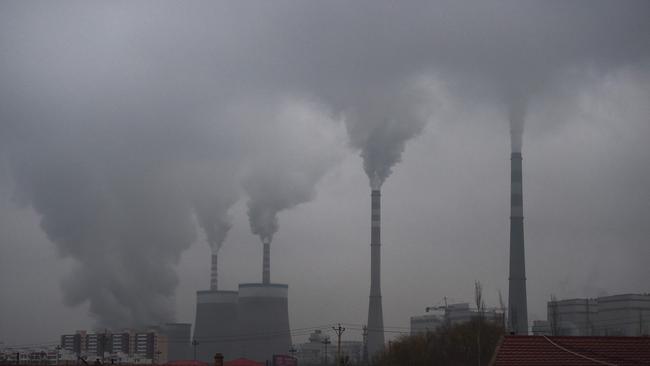Chinese told ‘don’t panic!’ as power crisis spreads
People in China have been told to expect ‘unscheduled, unpredictable, unplanned and unannounced power outages’ as the electricity crisis spreads.

Ominous notes are being posted in China as its 1.4 billion people brace for their biggest power crisis in more than a decade.
“Expect power cuts in the building. We don’t know when,” says one. “Whoever is in the lifts will be trapped. Don’t panic! Press the SOS button. If the line is busy, don’t panic!”
That note was posted in recent days in an apartment building in Shenyang, the capital of Liaoning province.
In neighbouring Jilin province, a state-owned utility warned customers that because of the demands on the national electricity grid, there would be “unscheduled, unpredictable, unplanned and unannounced power outages”.
Similar warnings are being issued across much of the world’s second-largest economy.
Videos shared on social media show families trapped in elevators.
Another depicts hundreds of vehicles stuck in the dark on a highway after traffic lights were turned off. Local authorities said it was necessary “to avoid the collapse of the entire grid”.
Twenty of China’s 31 provincial jurisdictions are now rationing power, according to state media.
The root of the problem is a lack of thermal coal, the price of which has rocketed as global demand has spiked.
Nearly 60 per cent of China’s economy is powered by coal.
Analysts at Sinolink Securities estimate that from September to February, China will need 1.85 billion tonnes of thermal coal to keep its factories running and its northern citizens from freezing. Projections by Sinolink estimate China could fall short by as much as 344 million tonnes – or almost 20 per cent.
That gap would make catching an elevator in China a risky endeavour for a while yet.
Much of the problem is made in Beijing. The price of electricity is fixed in most of China, which means many power stations are now running at a loss because of the rocketing coal price.
That is a big disincentive against increasing production.
ANZ economist Raymond Yeung said the system “needs reform”.
Workers in factories across China’s southern and eastern coastal provinces would agree.
Many are sweltering as airconditioners are turned off. Others fear pay cuts will follow the power cuts that are already curtailing China’s industry.
Economists at Goldman Sachs have cut their growth projections for China this year by 0.4 per cent to 7.8 per cent.
The Xi administration’s ban on coal imports from Australia has not helped. Until last year, Australia was a reliable supplier of high quality, competitively priced thermal coal that topped up China’s domestic production — and helped to keep the lights on and elevators working.
This is China’s second major power crisis since the black-listing. The first one happened last winter, around six months after China stopped clearing Australian coal at Customs.
Aiqun Yu, China researcher at Global Energy Monitor, told The Australian there had never been such a dramatic cut to residential power in her home province in northeast China.
“This has never happened in my memory,” said Ms Yu, noting that both blackouts had occurred after the ban on Australian coal.
“I can’t help thinking that there are some connections between the two. It’s a sensitive topic in China,” she said.
WeChat groups of power experts do not want to discuss it out of fear of being censored.
Others have tried a different approach, creating articles that mimic the bravado of state media.
One such piece said the power cuts were part of Beijing’s cunning plan to “shock” Australia by reducing coal prices and to send “export inflation” to the US and Europe.
China’s party state broadcaster has since clarified that, no, rolling blackouts across the country are not part of Beijing’s grand strategy – or “Big Chess Theory”.
Times are interesting when Beijing feels an official commentary is needed to make that clear.




To join the conversation, please log in. Don't have an account? Register
Join the conversation, you are commenting as Logout